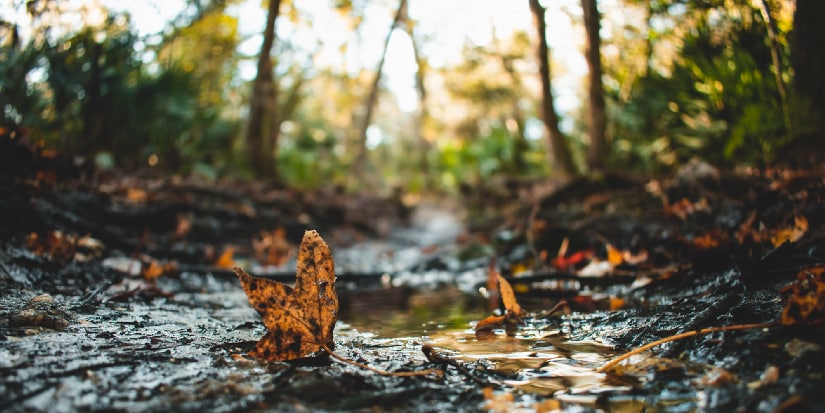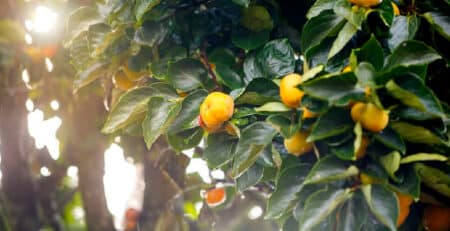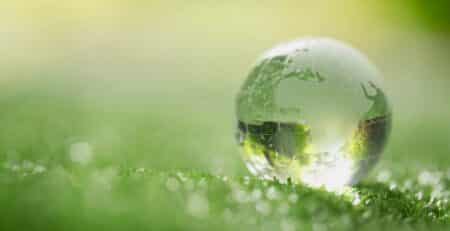What Trees Like Wet Soil?
Planting trees can often be an overwhelming task. After all, there are many factors to consider, including the type of soil you plan to plant those trees into. You may be living in an area that has a lot of wet soil. Perhaps the ground holds water more and is susceptible to flooding in the winter months. Can you still plant trees successfully? The answer is yes! If you are hoping to find out what trees like wet soil, then below is a list of options you might want to consider.
13 Trees That Like Wet Soil
 Willow Tree
Willow Tree
A willow tree is suitable for most grounds and areas, and so it is an excellent choice if you are looking to plant a tree that has predominantly wet soil. They perform well in most sites, but they don’t have solid limbs or stems, so they may bend or even break during storms or bad weather. There are many different types of a willow trees that you could consider, including the weeping willow, the gold and white willow tree. You can grow a willow tree from cuttings, but one of the most common and most effective ways is to develop from a bare root tree at least one year old to get the best results.
Sweetbay Magnolia
Sweetbay magnolia trees are a striking tree and prove to be very popular. They are a tree that works well when planted in wet soil. A Sweetbay magnolia tree has unique white or creamy coloured spring and summer flowers. Those flowers have a sweet, citrus fragrance. The leaves show movement in the breeze to flash a silver-tone under the leaves, making them look beautiful. Sweetbay magnolia trees can grow up to 50 feet high. If you are looking for a more compact tree, especially in an urban area, then the sweet magnolia could be a good choice. They rarely grow higher than 30 feet in cooler regions, so it can be an excellent option to consider.

Red Maple Tree
The Red Maple tree gets its name because of the foliage that is a bright and attractive red colour. It often is seen as a huge focal point when it is spring and summertime. The red theme continues throughout the seasons, with a robust autumnal glow to red berries forming in the winter months. Red maple trees vary in size; they can grow between 40 and 70 feet tall and spread anywhere up to 50 feet wide. They are grand and can acclimatize very well when planted in wet soil. However, before considering planting, be mindful that Red Maple trees have powerful roots that can be large and thick in size. They can even grow near or above the surface area.
River Birch
The river birch is a famous tree that you will commonly find along river banks and extremely wet parts of the garden. Hence why this tree likes wet soil. It has an attractive bark that looks exceptional in the winter months. The river birch is also quite heat tolerant, making this an excellent choice for wet areas that can still get quite hot on the surface area. Planting this tree in wet areas of your garden or on a bank of water can be a great choice. They grow exceptionally well and can provide excellent shade as they all brand out and grow wide.

Pin Oak
Pin Oak trees can also be known as mighty oak trees. They are known to be speedy growing and to be able to command the land in which they are planted in. They are also known to be a shade tree which can make them an excellent choice for the area you are looking to plant your tree. In the summer months, the Pin Oak trees have a darker shade of green leaves that turn a dark red colour in the autumn months. They also stick around for the winter months, which is unusual. The stunning leaves hang from thick and dense branches.
Atlantic White Cedar
An Atlantic White cedar tree may be known to you by some other names, including the Post Cedar or Swamp Cedar. Given one name includes the word swamp, there is no reason to deny that this tree enjoys a wet soil environment. The Atlantic white cedar is an impressive evergreen tree that can reach heights of up to 115 feet. This wet soil tree works extremely well when it comes to wet soil conditions and can last in some of the most extreme areas. Growing Atlantic white cedar is not a difficult tree for a wet soil environment, and once the tree does start to establish, it requires little to no maintenance. You are making it a great choice for a novice. Finding a young Atlantic white cedar tree to plant might be very difficult, so you may need to seek out specific nurseries to find the right option for you.
 Bald Cypress
Bald Cypress
The Bald Cypress is a unique tree which means there is no mistaking its identity. They are seen as very tall conifers with a large trunk base. If you are considering planting a bald cypress tree, it is worth noting that these are also good in wet soil, although they can thrive in other conditions. They can grow very tall, as much as 120 feet. You also need a big space to allow these trees to grow as well as they can. These trees are also very important for wildlife, so they can be an excellent addition to your area.
Black Ash
You will find that the Black Ash tree grows in wooded areas that typically have wetlands and swamps. Which means they thrive in wet soil environments. However, the trees grow slowly, but on the opposite end of the scale, they develop into tall trees that are slimline with attractive feathered leaves in time. When the tree is young, there is a smooth bark, but the bark turns dark grey or even brown as the years go on. It can grow up to 70 feet tall but remains slim. The branches grow upward, and by doing so, they form a slightly rounded tree head. The wood of the black ash is heavy and durable.
 Green Ash
Green Ash
The green ash tree is an attractive shady tree. Green ash trees can grow up to 70 feet tall and thrive in a wet soil environment. When planting a green ash tree, you will need to ensure enough space for it to thrive. One thing to note about the green ash is that it develops seedlings, which can be very invasive or not dealt with properly. So it is important to ensure that you remove the seedlings so that they don’t cause you too many problems in the future.
Pumpkin Ash
Pumpkin ash trees are quite rare and also very difficult to look after. But you can’t have a list of trees that work well in wet soil without mentioning the pumpkin ash. The pumpkin ash tree is very large and reaches heights of 90 feet. However, they can be smaller in some places if looked after in a specific way to ensure they don’t grow too much. The foliage you will see on a Pumpkin Ash tree is small and concise. You will see that the leaves are darker green on the outside. The tree also has flowers that form in the spring. They are a green tone of purple and look very attractive. After a while, the flowers fade and the fruit grows in its place.

Planetree
Planetrees, or what is also known as London Planetrees, are natural hybrids of trees—having developed over the years in European environments. They thrive in wet soil, making them a choice. The trees themselves can grow up to 100 feet tall and can reach wides of around 80 feet, making them quite the big entity in the tree world. While some say that the planetree can only grow in direct sunlight, they can thrive with some partial shade.
Peartree
Growing fruit trees might not be on the agenda when it comes to wet soil. But actually, a pear tree can thrive in those conditions. It can be a very rewarding experience for growing fruit trees, and pear trees are no different. A full-sized pear tree can grow up to 40 feet tall. A pear tree does require full and direct sunlight, so be mindful of the position that you choose to plant your tree.

Nuttall Oak
The Nuttall oak is one of those trees that is quite rare. It is part of the red oak family. They do require very minimal effort and upkeep and can thrive in a wet soil environment. Like many oak leaves, the Nuttall oak has what is described as lobed leaves. You can identify this particular oak tree by its different-looking acorn that makes it different from the rest of the oak family. They can grow up to 80 feet tall, and they can be up to 50 feet wide.
If you are looking to plant a tree in wet soil, one of the above mentioned should be more suitable. Let’s hope this has been useful to you and for you to make the right choice of tree for the area you want to plant it.







